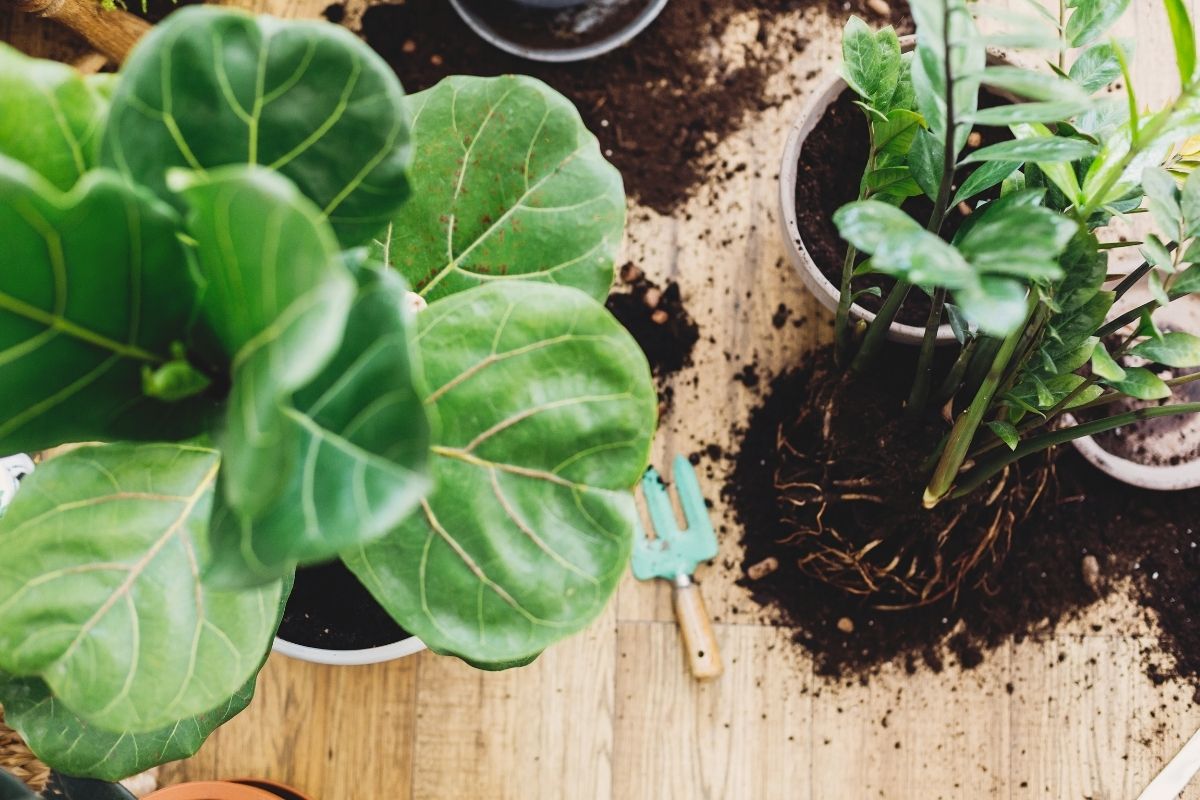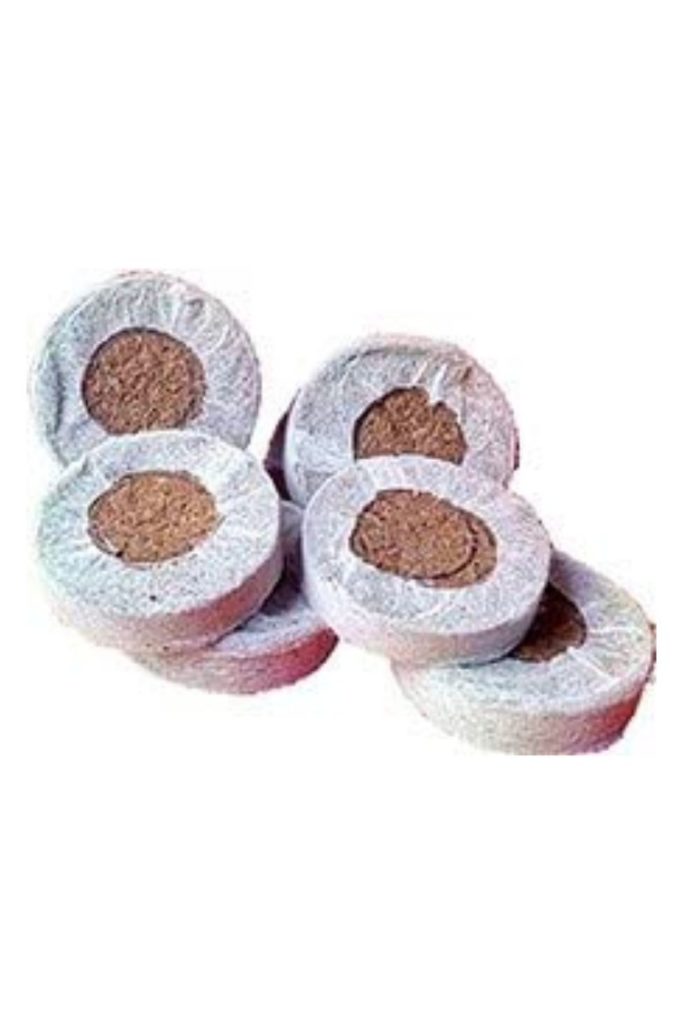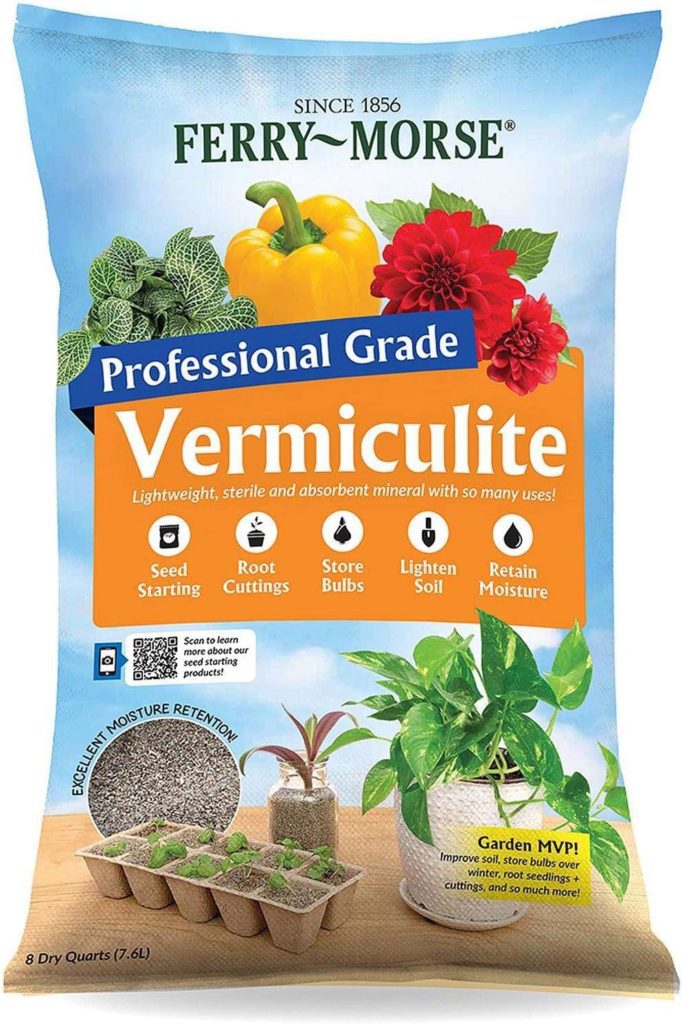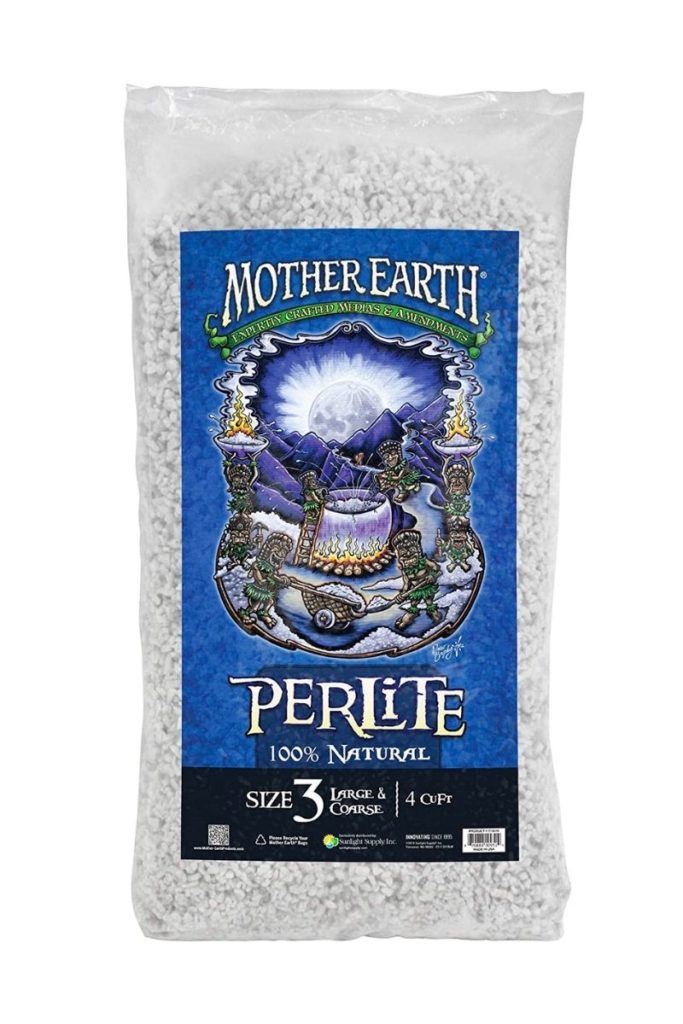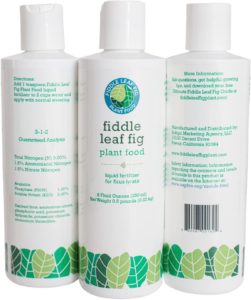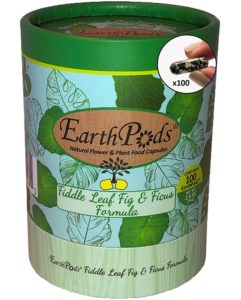To re-pot, or not to re-pot? Repotting fiddle leaf figs (ficus lyrata) can be a quick and easy process, but it’s important to do it at the right time and with the right soil to get the best results.
The best time to re-pot a fiddle leaf fig is during its growing season (spring and summer). But how often do fiddle leaf figs need a fresh start in a new pot? A good rule of thumb is about the same frequency that your favorite Netflix show releases a new season. 😂 LOL!
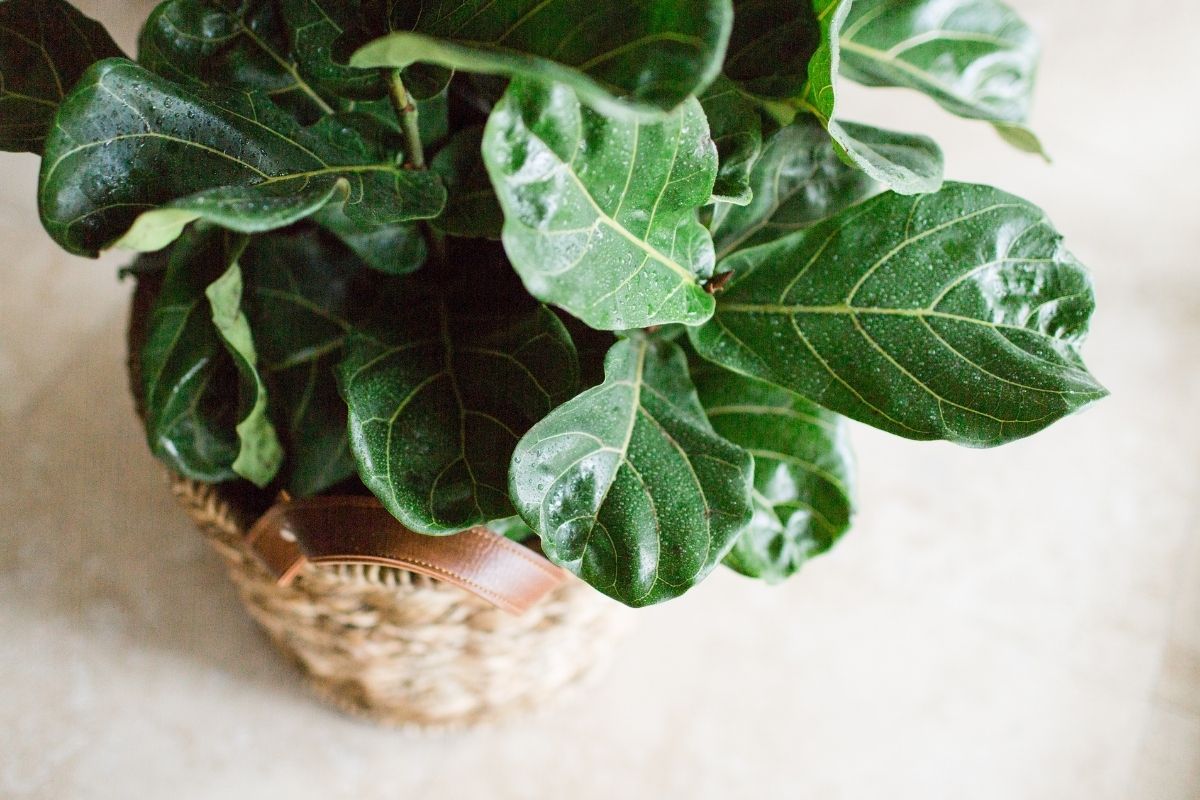
The truth is, every fiddle leaf fig tree is a bit different in this regard. Root growth usually corresponds to foliage growth, so abundant leaf growth is a good indicator that your plant needs a new container. Some fiddle leaf figs grow up to 2 feet per year, while others inch toward the sun more slowly. If you want to keep your fiddle leaf fig about the same size, it’s still a good idea to change your plant’s soil annually to keep it well-nourished. In this article, we’ll go over some of the telltale signs that your plant needs a new home.
signs your fiddle leaf fig needs repotting
One of the first signs your plant needs a fresh start is when it becomes root bound in its current pot. Do you see your fiddle leaf fig’s roots growing out of the drainage holes of its pot or creeping up at the soil level? It’s time to upgrade to a bigger pot!
You’ll usually need to do some root ball inspection to be sure it’s time. Holding onto the base of the plant, it should slip out of its pot pretty easily. If you don’t see visible root crowding, it’s a good idea to repot your fiddle leaf fig with fresh potting soil every 2-3 years to keep your plant nourished and healthy.
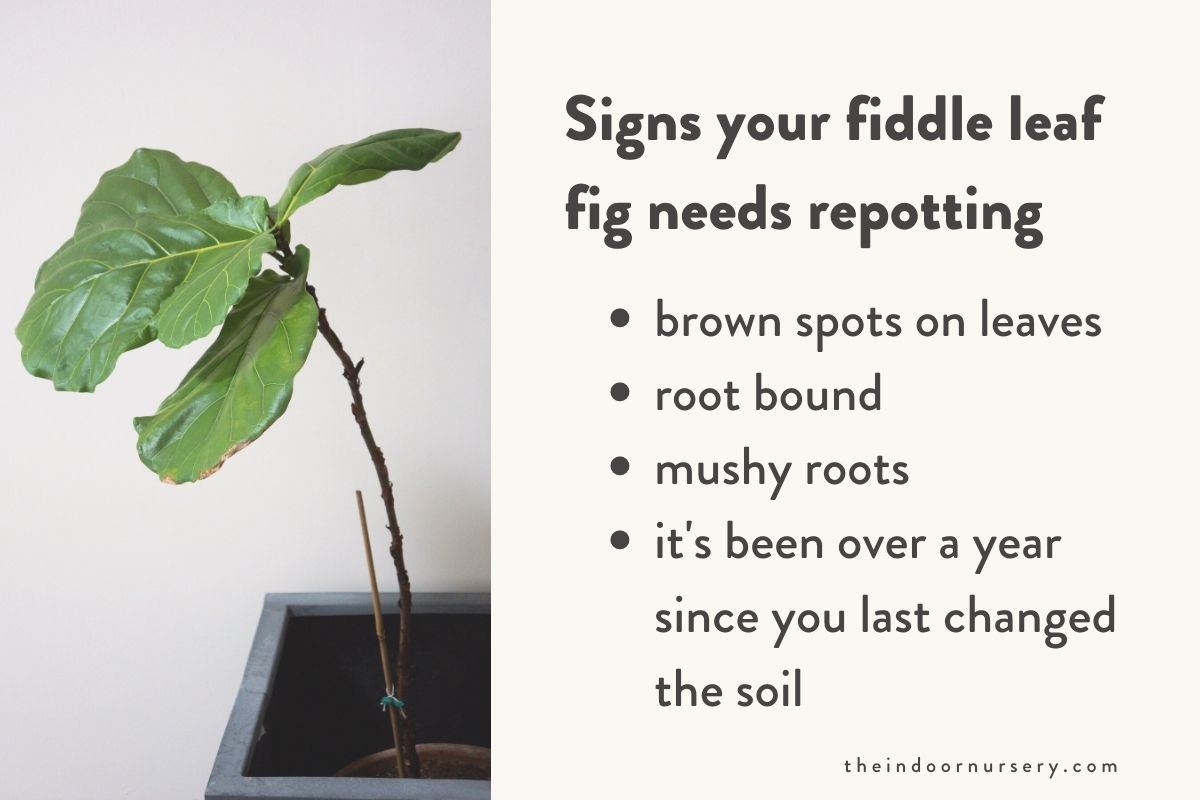
pot size: choosing the right size container
Before picking out a new pot, check your fiddle leaf fig’s root ball. If your plant is root bound, you’ll notice the roots crowding at the base of the pot and possibly peeking out of drainage holes in search of more space and nutrients. If the roots are brown and mushy, then you have rotten roots! Remove these by trimming them away from the healthy root ball with clean garden shears. If you’ve trimmed away more than an inch of rotten roots upon inspection, stick with the same size pot that you had before.
If your fig’s roots are healthy, we advise you to choose only a slightly larger pot (about 1-2 inches more). Fiddle leaf figs like to be pretty snug and cozy in their pots. Giving them an oversized pot will cause the plant’s foliage growth to slow down as it focuses energy on growing its root system.
Whatever size pot you choose for your fig, make sure it has a good size drainage hole to prevent root rot and disease. Whether you choose a ceramic pot, plastic pot or decorative pot is up to you. If you use decorative pots without drainage holes, make sure to place your fig tree in a pot in an existing pot that does have holes and then place it in your decorative pot.
the best soil for fiddle leaf figs
Fiddle leaf figs need well-draining soil high in organic matter, and they actually prefer soil with a slightly acidic pH between 5.3 and 6.7. Look for mixes that include fir or pine bark mulch, Spanish moss (to absorb water and release it slowly), perlite, coconut coir, charcoal and sand – or mix up your own potting soil. All of these soil components help maintain the proper drainage and water retention of the soil and provide the ideal structure for healthy fig roots to go wild! Sand offers stability to your potting mix, and encourages drainage.
SEE OUR TROP RECOMMENDATIONS: best soil for indoor plants
drainage
The most important thing to keep in mind when you re-pot your fiddle leaf fig, is to use soil that drains well. A red flag that your soil isn’t draining well? Brown or red spots on those gorgeous fiddle leaf fig leaves. This happens when the plant cell walls cannot contain the excess water any longer and burst, causing the reddish tint. This is known as “edema” or “oedema” in scientific terms. If this happens, then you’re either watering way too much or the water is accumulating in the soil (aka has poor drainage).
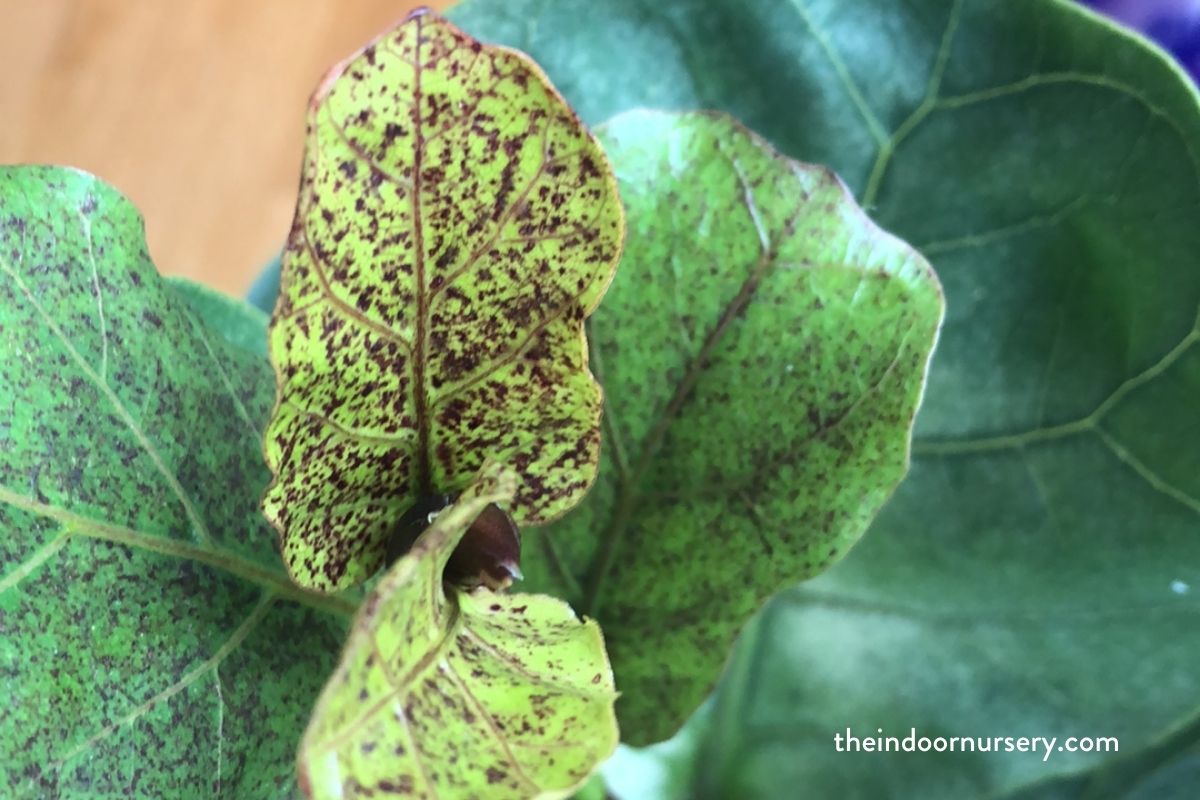
You can also test your pot by watering your plant and waiting to see if the water runs through the drainage holes at the bottom of the pot. Always place a saucer underneath the pot to catch extra water and keep your plant’s soil slightly moist, but not soaked.
fertilizing
Fertilize your fiddle leaf fig during the spring and summer to harness sun power and give your plant everything it needs to produce its healthiest foliage. Sync up your fertilizing schedule with your watering schedule and aim to fertilize as you water about once a month during the sunny season. When using liquid fertilizers, always read the instructions before measuring into your watering can – some are more concentrated than others. With the right fertilizer (yes, you can even find fertilizer specifically for fiddle leaf figs) your plant will grow lush and super strong.
repotting fiddle leaf fig + basic care tips
It’s time to repot your fiddle leaf fig! Follow these steps for a quick and painless process.
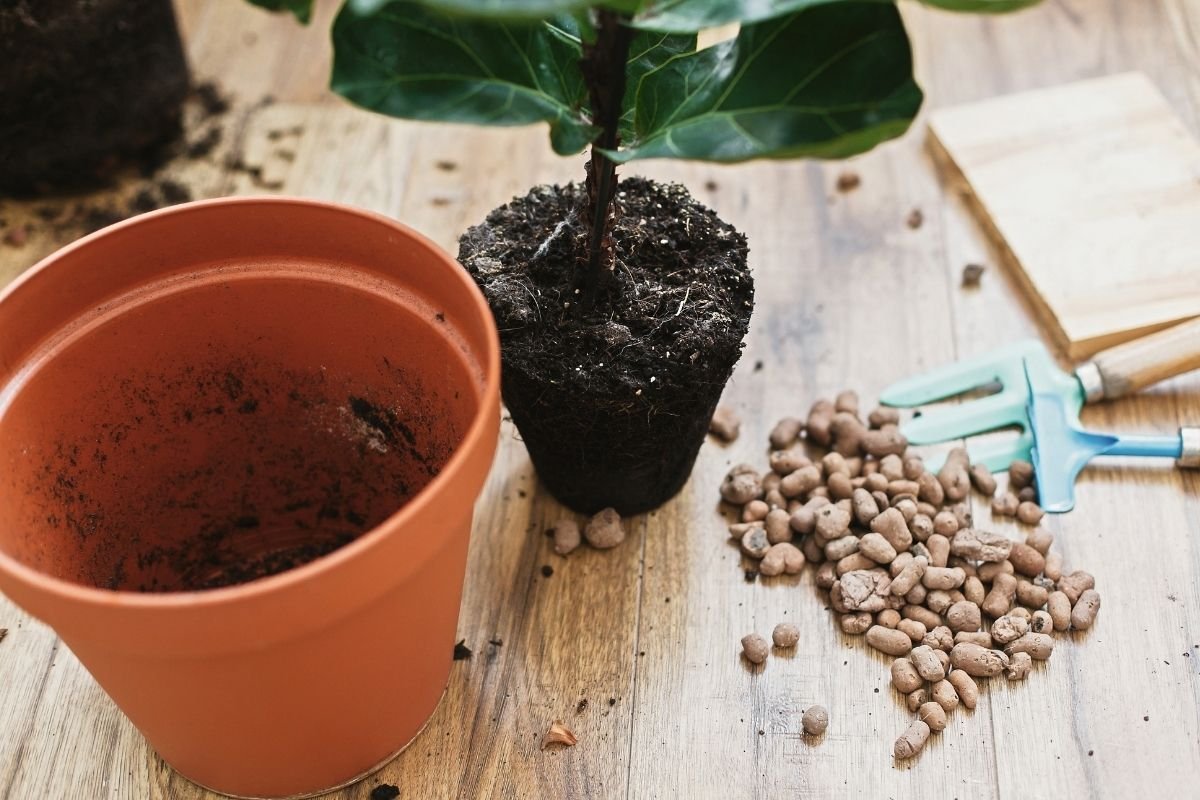
- Set your potted plant on its side, and gently tug it out.
- Shake loose soil free of your plant’s root ball and discard.
- Examine the roots: If they’ve grown into a tightly tangled knot, gently slice the compacted knot away with garden shears. Do the same with dead or dying roots.
- Fill up the new planter with the fresh potting mix and place the plant upright in the pot.
- Cover the roots completely with soil and fill up the entire pot. If you have a tall plant, recruit a friend to hold the plant upright as you fill around the sides with soil to keep it supported.
- Gently pat the soil in and give your fiddle leaf fig some water.
how to care for your repotted fiddle leaf fig
light
Fiddle leaf figs like bright, but indirect light. Direct sunlight can be too strong for them and may burn the leaves. If you live somewhere where strong sunlight hits your windows, try to move your plant away or use a sheer curtain to block the sun’s rays.
water
These exotic mini-trees like to be watered, but not too much. They like their soil moist, but not soggy. Water slowly until you see the water going through the drainage holes. If you have a plant saucer underneath, be sure to empty the extra water to prevent root rot! It is recommended to water a bit more during its growing season, and less during the winter.
If you’re underwatering your fiddle leaf fig, you’ll notice its leaves will dry out and start to yellow and brown at the edges.
Signs of an overwatered fiddle leaf fig are similar to those of underwatering and include yellowing, browning, and dropping of the lower/older leaves.
temperature
Since they originate from the tropical, humid rainforests of Western Africa, figs love warm, humid conditions. A simple way to increase the humidity in your home is by adding a tray with some water under your pot, but your fig would def appreciate a humidifier as well! Add pebbles or rocks to prevent the roots from getting too wet. In the winter, you could get a humidifier to keep your plant extra happy. Cold drafts will cause the leaves of your plant to drop.
fertilizer
You can fertilizer your fiddle leaf fig with an all-purpose fertilizer, but if you want to spoil your plant, check out our recommendations for specially-formulated fiddle leaf fig fertilizers below. Whatever fertilizer you choose, apply it during the growing season, and hold off during the winter when your plant goes into dormancy. Make sure to dilute the fertilizer in water so you don’t burn its precious roots!
pests
Unfortunately, these beautiful tropical plants are susceptible to pests like spider mites, aphids and others. It is a good idea to regularly check as well as mist your plant with water daily. If you see any of these pests on your plant, go to your local nursery and buy the right pesticide for your plant. If the leaves are yellowing or dropping, this may be a sign that your fig tree is being attacked by pests.
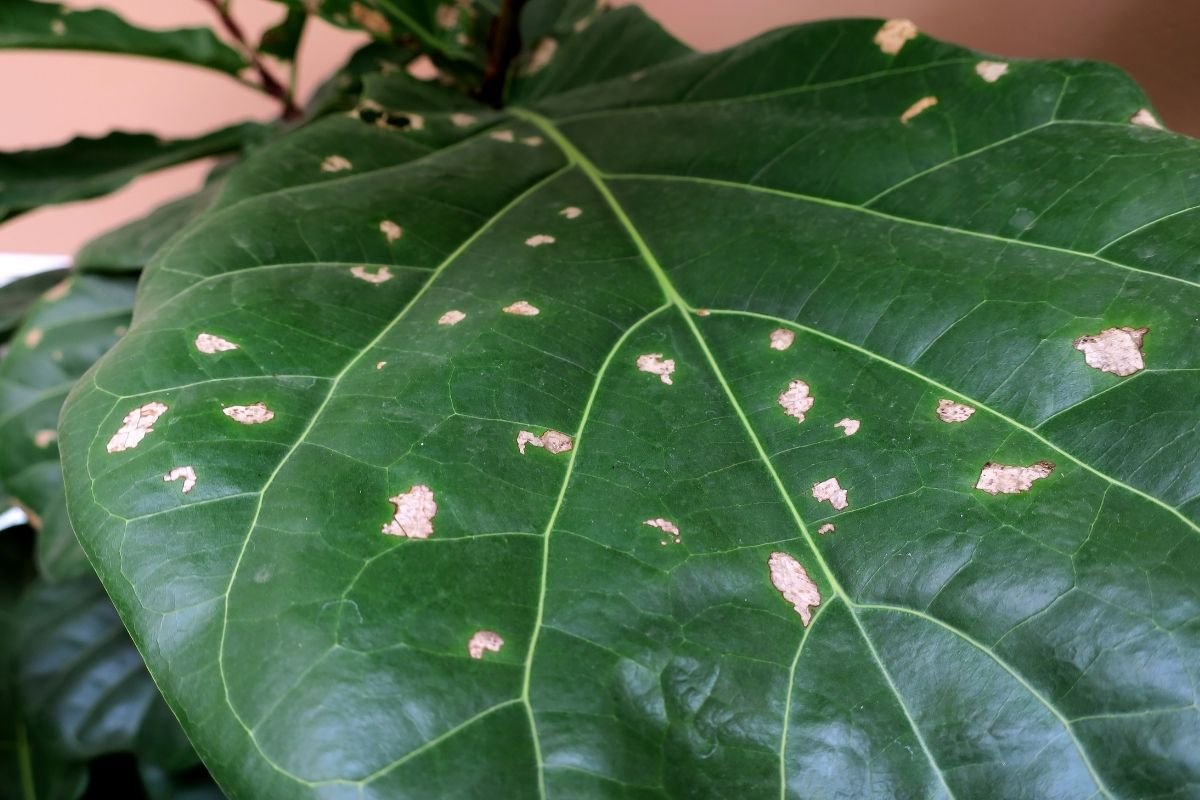
best fiddle leaf fig fertilizer
Fiddle Leaf Fig Tree Plant Food
Fiddle leaf fig plants (ficus lyrata) need a lot of specific nutrients to stay healthy and grow strong root systems. This liquid fertilizer is specifically designed to be used every time you water to keep your fiddle leaf fig tree green and healthy. All you need to do is dilute 1 teaspoon in 2 cups of water.
Earth pods fiddle leaf fig slow-release fertilizer is perfect for stimulating root growth in your plant. It also encourages the leaves to develop their vibrancy and strength. This can also be used for your other houseplants if you have Monstera, Dracaena, Golden Pothos, Calathea, Colocasia, Schefflera or other leafy houseplants. Just place one capsule into the soil of your pot near the center of the plant and water! The nutrients will break down slowly and release nutrients directly to its root system.
Perfect Plants Liquid Fertilizer
This is fertilizer food your indoor plants will love! It will lead them to have vibrant growth, and more color. You only have to add a small amount before water, as it is concentrated. Just wait a few days and your fiddle leaf fig plant will be thriving.
FAQs
When should I repot my fiddle leaf fig?
Here are a few signs to know when it’s time to repot your fiddle leaf fig:
– The roots are growing out of the pot or circling the outer edge of the pot
– Your fiddle leaf fig’s soil is not drying out or drying out too quickly
– Your plant growing super slowly
Do fiddle leaf figs like being root bound?
Yes, these plants like to be snugly settled in their pots! Just make sure that your plant’s roots are not wrapped too tightly around each other – this compaction prevents the roots from being able to access and uptake water and nutrients in the soil.
What is the best fiddle leaf fig soil mix?
An ideal soil mix would be something containing 1 part peat moss/coco coir, 1 part perlite, and 2 parts organic soil.
How do I replant a fiddle leaf fig with root rot?
If your plant is experiencing root rot, it needs to be repotted immediately with fresh soil in a well-draining container. Remove it from the pot, trim off the rotten roots with scissors and repot the plant. Make sure you remove all of the rotten roots, as they can re-infect the plant. Get rid of all the old soil and replace it with fresh, new soil. Take into account that repotting may be stressful for the plant and could give it a shock. It will need to get adjusted to its new environment and heal before taking on too many nutrients or fertilizers.
How do I avoid root rot?
You can avoid root rot by not overwatering. You can do proper checking techniques like putting your finger into the soil to check if it is moist and looking at the texture of the leaves for any brown spots.

